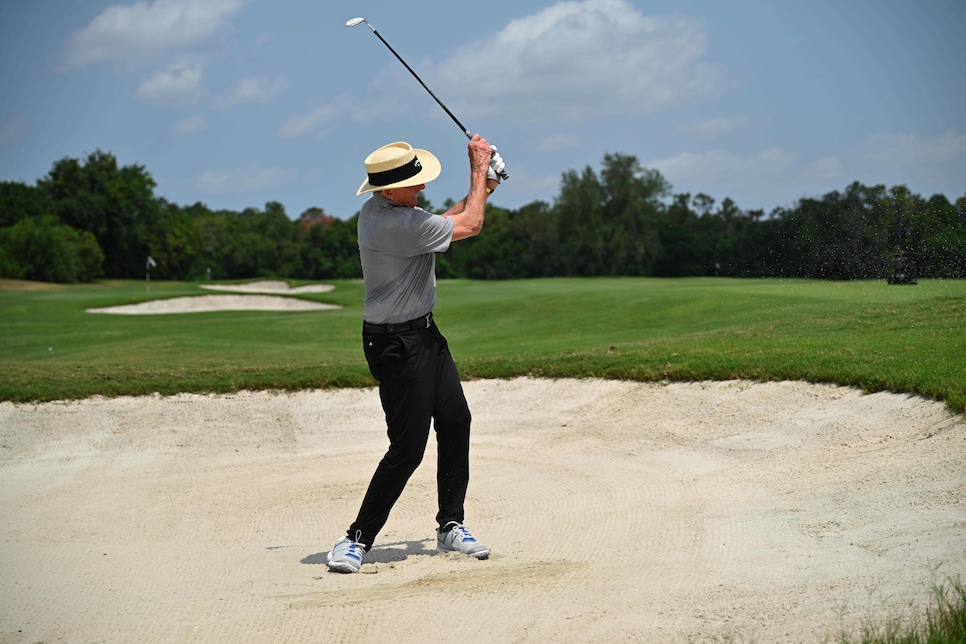There’s a lot of trust involved in golf. Your instincts often make you think you have to do the exact opposite of what you’re actually supposed to do to execute a shot. Slicers, for example, sometimes try to swing more to the left to keep their ball from going to the right. Actually, they should swing more to the right to reduce or eliminate that banana curve. You get the idea.
In bunkers, the concept that you purposely hit behind the ball can be a strange feeling. Even stranger is the notion that you make basically a full swing for such a short shot. If you don’t commit to following through, the result is typically a shot that doesn’t leave the bunker.
Regulating distance from greenside sand is primarily about the through-swing. You have to believe that if you make a healthy pass at the ball, it’s not going to fly 100 metres over the green. Remember that by entering the sand behind the ball, all that energy you created quickly dissipates. If you don’t keep swinging, you won’t have enough momentum to get the ball on the green.
Generally speaking, you don’t need to change the length of your backswing. That’s good, because it allows you to focus on the follow-through. The further you are from the hole, the longer your follow-through should be. When you swing down, rotate your upper body to control the momentum. Land the clubhead an inch or two behind the ball, then keep turning. If you focus on where you want the swing to end, you’ll naturally accelerate your club through the sand. To vary distance, here are two different follow-throughs you should work on [below].


Experiment with various through-swing lengths to see how far the ball goes, and start to develop a system you can easily employ when you face different shots on the course – short shots just over the lip, average shots, long shots to the other side of the green. That said, I recommend you at least let the shaft get to parallel with the ground in the follow-through to ensure you have enough power to get the ball out – remember, that’s always goal No.1.

